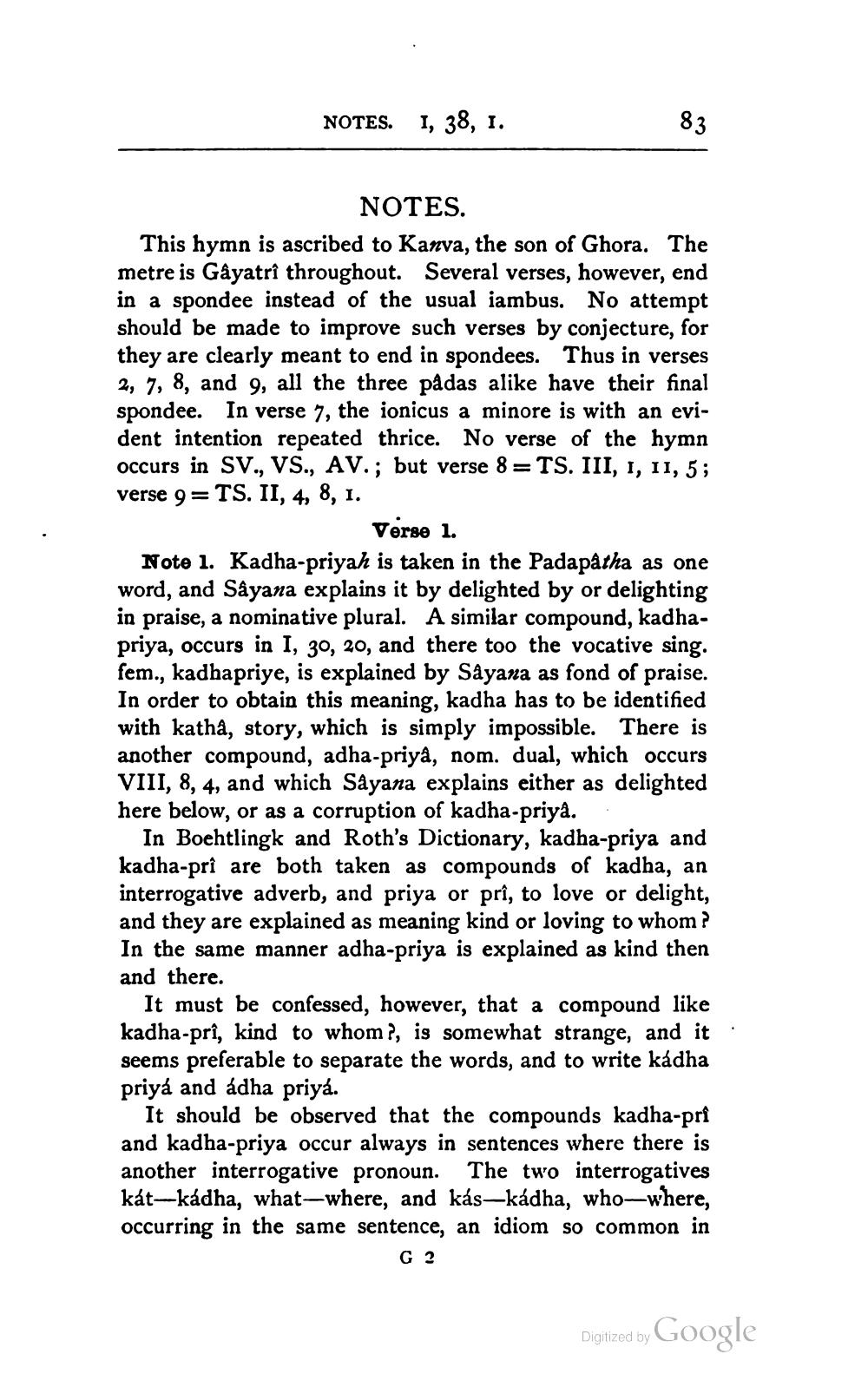________________
NOTES. I, 38, 1.
NOTES. This hymn is ascribed to Kanva, the son of Ghora. The metre is Gayatri throughout. Several verses, however, end in a spondee instead of the usual iambus. No attempt should be made to improve such verses by conjecture, for they are clearly meant to end in spondees. Thus in verses 2, 7, 8, and 9, all the three padas alike have their final spondee. In verse 7, the ionicus a minore is with an evident intention repeated thrice. No verse of the hymn occurs in SV., VS., AV.; but verse 8=TS. III, 1, 11, 5; verse 9= TS. II, 4, 8, 1.
Verse 1. Note 1. Kadha-priyah is taken in the Padapatha as one word, and Sayana explains it by delighted by or delighting in praise, a nominative plural. A similar compound, kadhapriya, occurs in I, 30, 20, and there too the vocative sing. fem., kadhapriye, is explained by Sayana as fond of praise. In order to obtain this meaning, kadha has to be identified with katha, story, which is simply impossible. There is another compound, adha-priya, nom. dual, which occurs VIII, 8, 4, and which Sayana explains either as delighted here below, or as a corruption of kadha-priya..
In Boehtlingk and Roth's Dictionary, kadha-priya and kadha-pri are both taken as compounds of kadha, an interrogative adverb, and priya or prî, to love or delight, and they are explained as meaning kind or loving to whom? In the same manner adha-priya is explained as kind then and there.
It must be confessed, however, that a compound like kadha-prî, kind to whom?, is somewhat strange, and it seems preferable to separate the words, and to write kadha priya and ádha priya.
It should be observed that the compounds kadha-pri and kadha-priya occur always in sentences where there is another interrogative pronoun. The two interrogatives kát-kadha, what-where, and kás-kádha, who-where, occurring in the same sentence, an idiom so common in
G2
Digitized by
Digized by Google




